The Erechtheion temple of the Athenian acropolis was constructed between 421 and 406 BCE under the supervision of the architect Philocles. The temple was built to house the ancient cult wooden statue of Athena and as a shrine to other local gods such as the early Athenian kings Erechtheus and Kekrops, and Boutes and Pandrosos. Poseidon and Zeus also had sacred precincts within the building. The south porch has the iconic Caryatids which make the building one of the most distinctive surviving structures of antiquity.
The Erechtheion, named after the demi-god Erechtheus, the mythical Athenian king, was built using local Pentelic marble. The largest inner chamber housed the diiepetes, the olivewood statue of Athena Polias (of the city-state), clothed in the specially woven robe which was carried in the Panathenaic procession, held in the city every four years. In front of the statue stood a gold lamp designed by Kallimachos which had a bronze palm-shaped chimney and an asbestos wick which burned continuously. The sacred serpent (oikouros ophis), which was believed to be an incarnation of Erechtheus, dwelt in one of the western chambers and acted as guardian to the city. Well looked after, it was regularly fed with honey cakes.
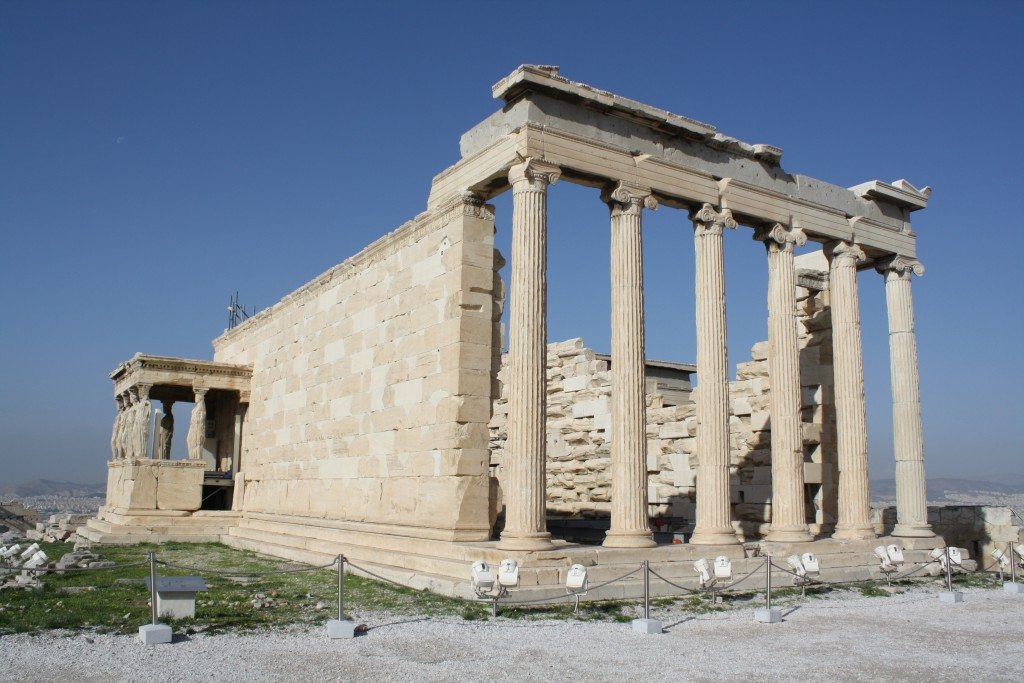
The front facade of the Erechtheion.
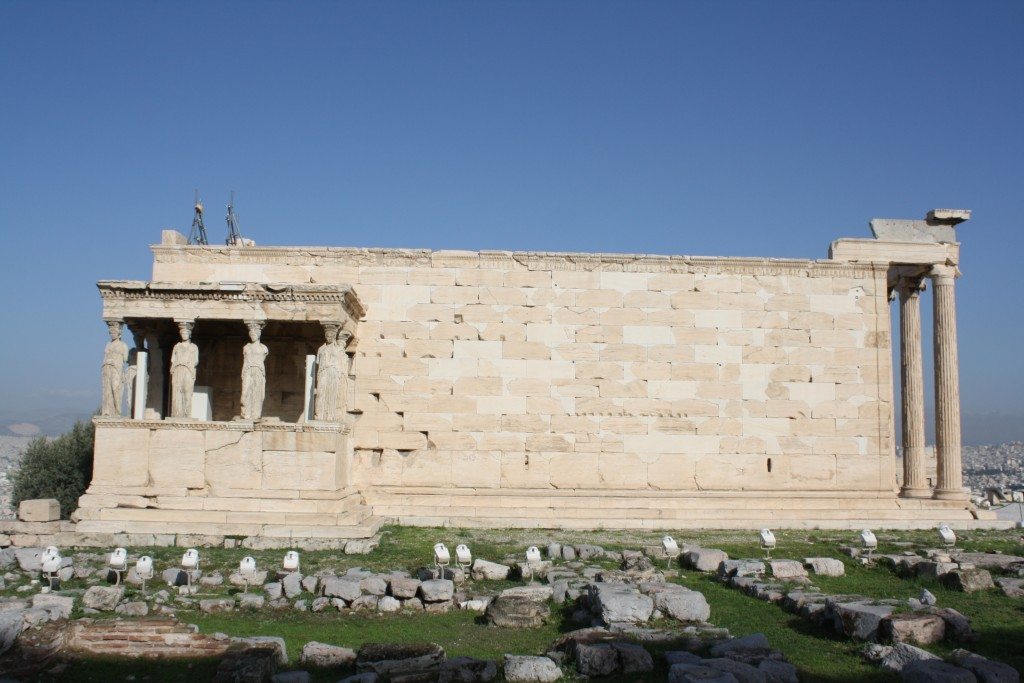
The south side of the Erechtheion with the porch of the caryatids.
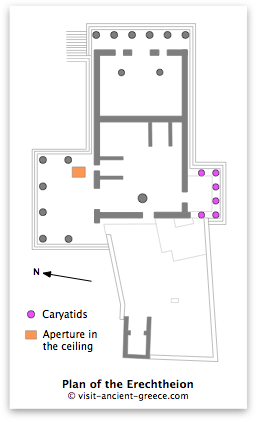
The floor plan of the Erechtheion. (Image by visit-ancient-greece.com. Copyright, used with permission)
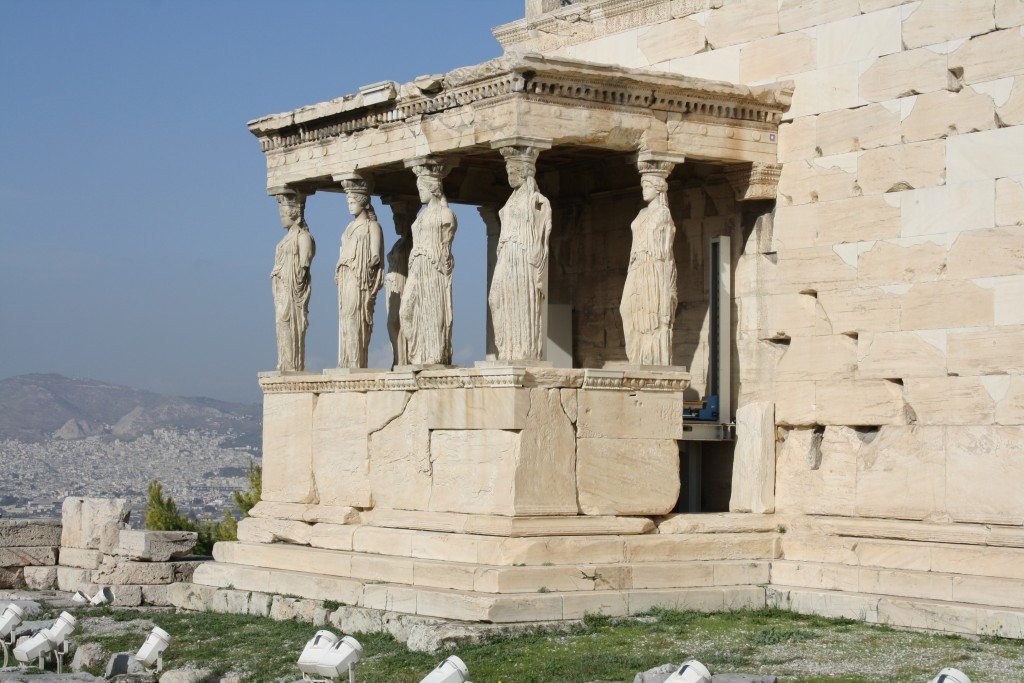
The south porch of the Erechtheion.
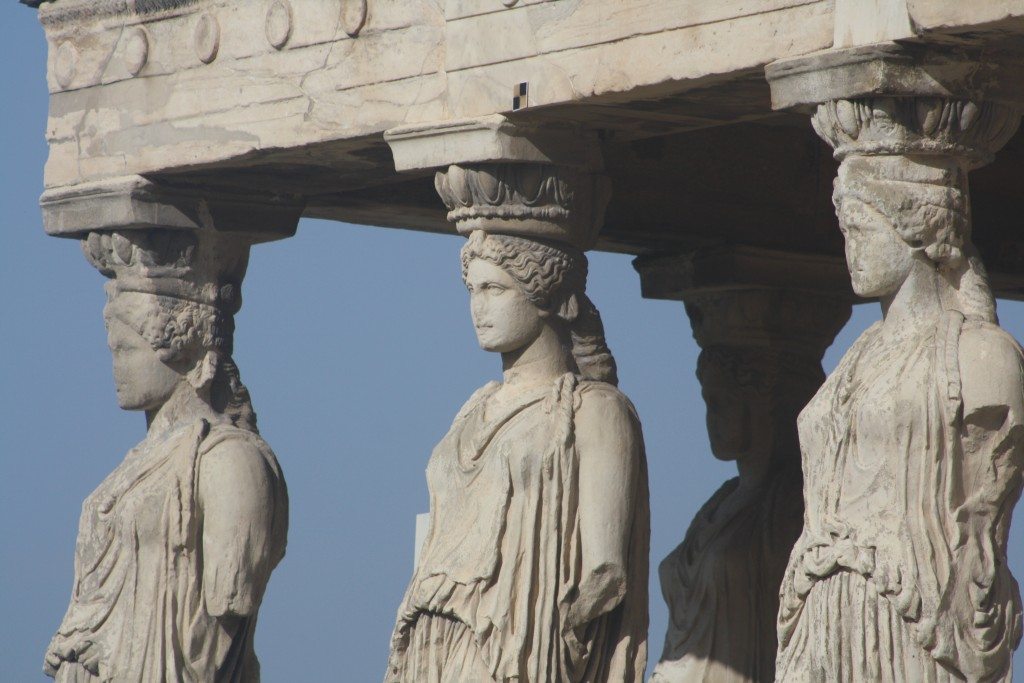
Detail of the caryatids of the south porch of the Erechtheion.

The ceiling of the north porch of the Erechtheion. The aperture symbolizes the spot where Zeus struck down Erechtheus with a thunderbolt.
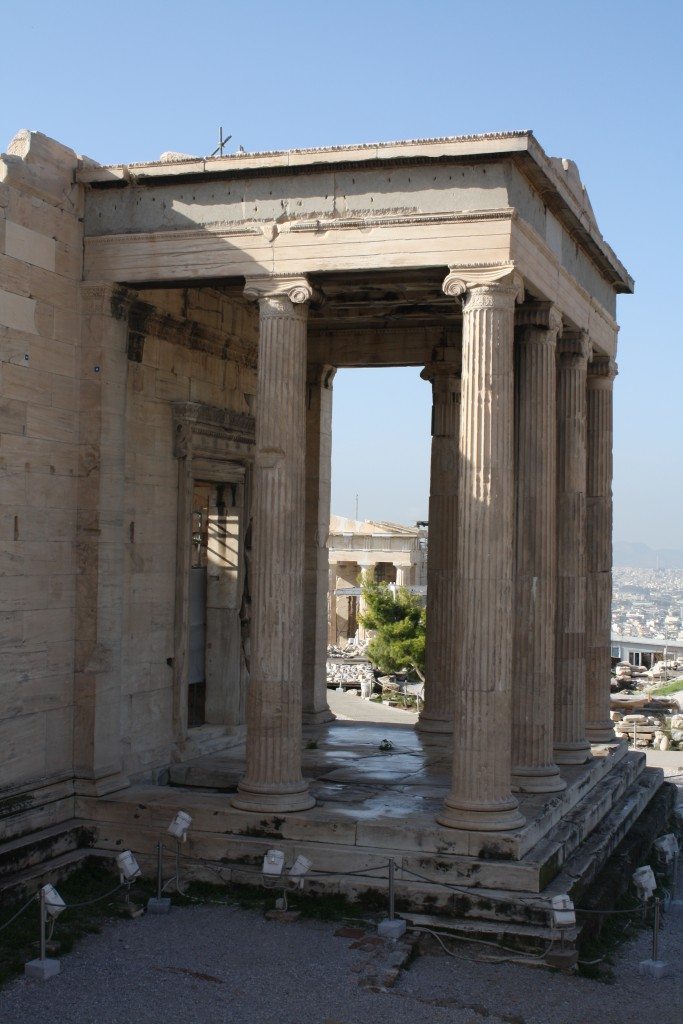
The north porch of the Erechtheion.
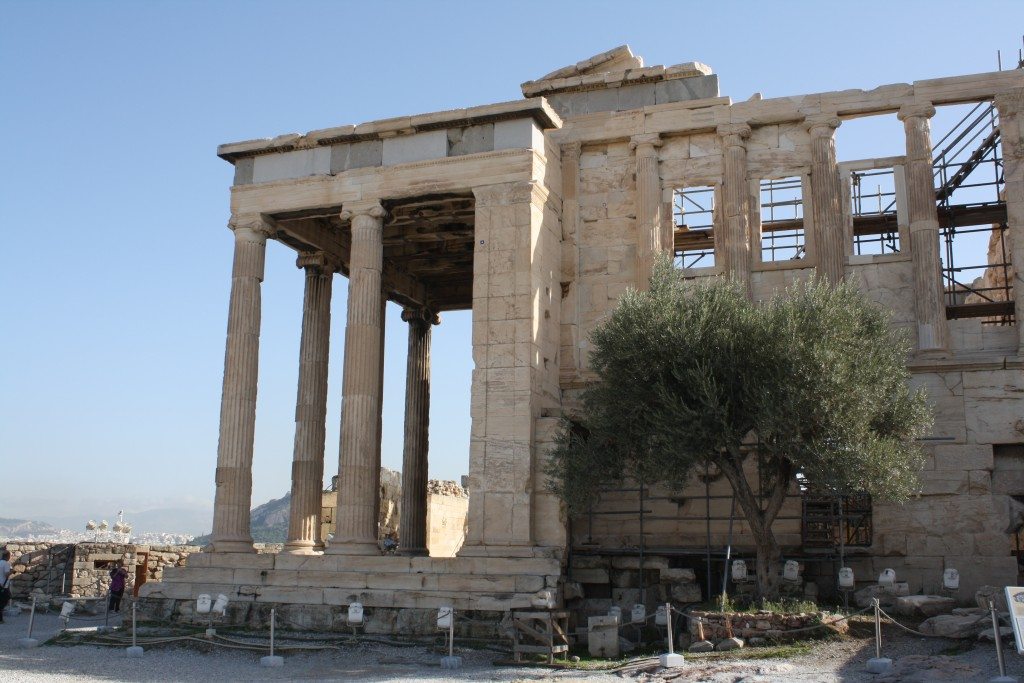
The north porch of the Erechtheion. Within was an altar sacred to Zeus Hypatos.
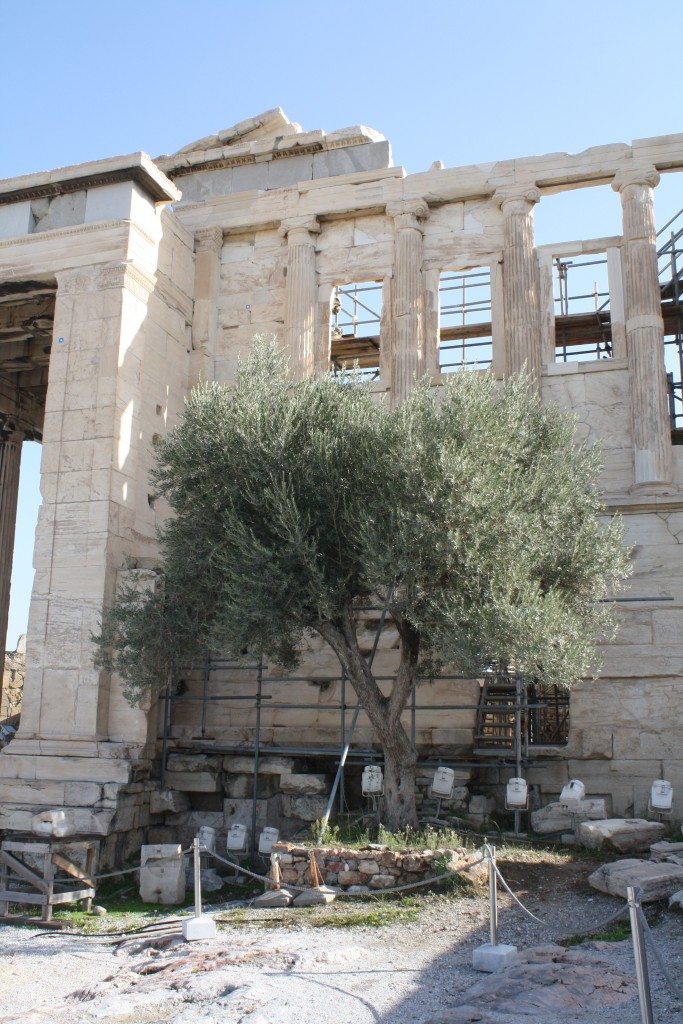
The sacred olive tree symbolic of the original which was believed to have been given to the city of Athens by Athena.
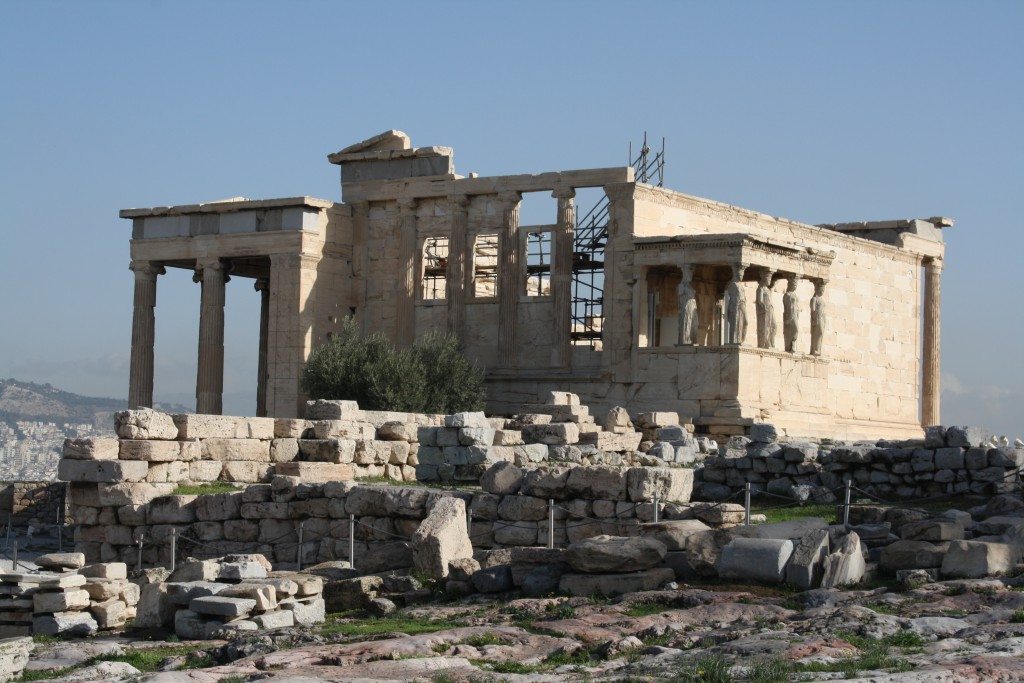
The western side of the Erechtheion.
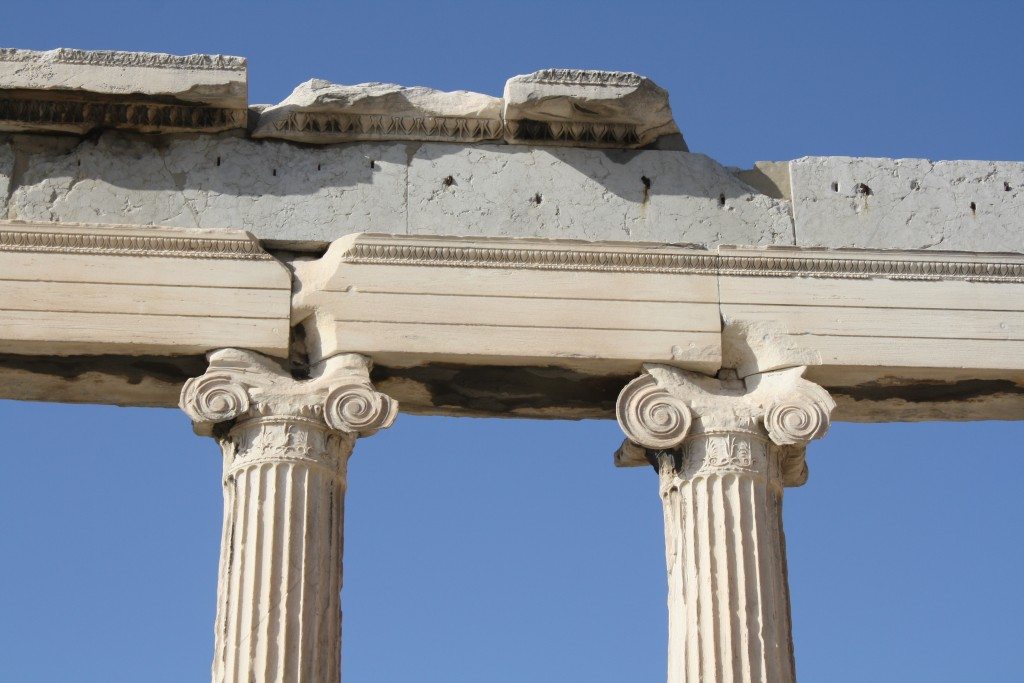
A detail of two Ionic capitals of the front facade of the Erechtheion.
For more information on the Erechtheion see here.
All images by Mark Cartwright
